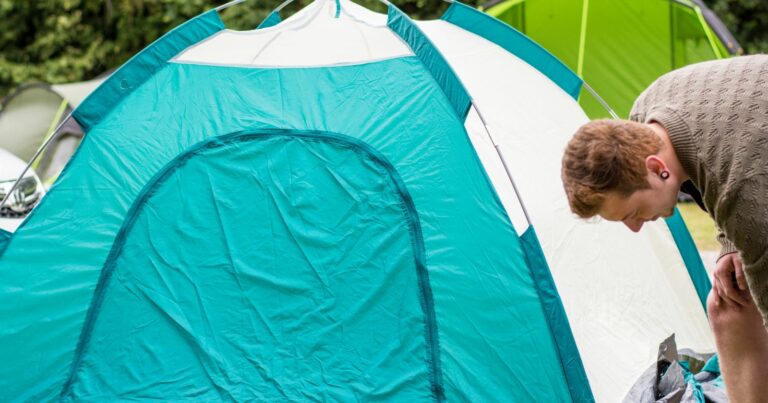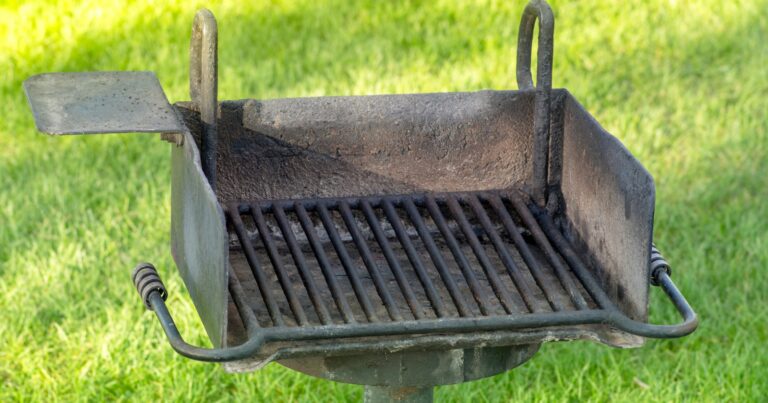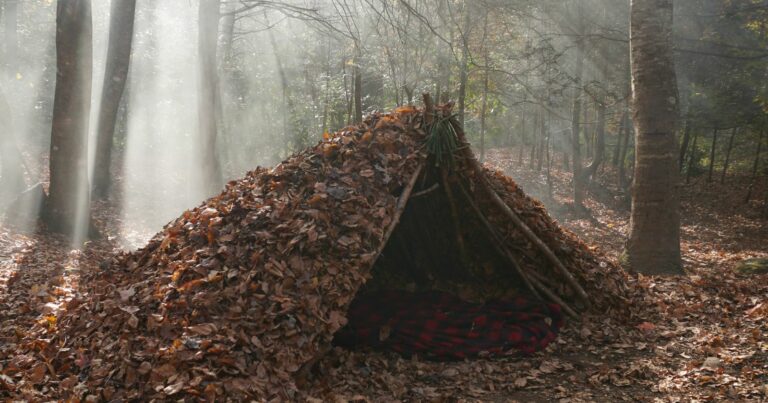How to Remove Mold from Camping Chairs
Sitting back and relaxing in your favorite camping chair is one of life’s simple pleasures. But finding your trusty seat covered in gross mold after being stored can quickly ruin your vibe. Even worse, mold can actually damage the fabric if left unchecked.
Luckily, removing mold from camping chairs is a straightforward task. With some basic cleaning methods, you can safely banish mold and have your chair looking fresh in no time.
In this post, I’ll walk through super simple techniques to get rid of mold using common household items. Bid farewell to those pesky spores so you can lounge comfortably around the campfire once more. Learn how to thoroughly clean camping chairs and prevent mold from returning so you can reclaim your backcountry throne. Before long, you’ll be kicking back and relaxing mold-free again in the great outdoors. So read on to revive your favorite camp chair and make mold nothing but a bad memory.
Inspect and Assess the Mold Damage
Start by examining the chair and determining the extent of the mold:
- Look at the entire chair closely including the underside and creased areas.
- Check how extensive the mold is and if it’s surface mold or has spread deeper into the fabric.
- Identify problem areas like the seat, armrests, and backrest. Pay attention to where moisture collects.
- Determine if the mold has caused any damage like staining, holes, or deteriorated seams.
This inspection will dictate the cleaning method and intensity needed to fully remove the mold.
Remove Loose Mold and Dirt
Before using cleaners, remove any loose particles clinging to the chair:
- First vacuum the chair with a handheld vacuum’s brush attachment. This lifts most of the mold and dirt from the surface.
- Use a small soft brush like an old toothbrush to scrub away any remaining debris.
- Work slowly and gently, especially on more delicate canvas and mesh fabrics.
- For mold in crevices, use plastic picks, skewers, or chopsticks to dislodge it.
Removing all the easy debris first allows cleaners to penetrate and target the more stubborn mold.
Create a Vinegar Cleaning Solution
For most camping chair fabrics, a vinegar solution works excellently to kill and remove mold:
- Mix equal parts white vinegar and warm water in a spray bottle. Shake well.
- Vinegar is a natural acid that dissolves mold and neutralizes odors without harsh chemicals.
- For thicker mold, increase the vinegar-to-water ratio up to 2:1 but test on inconspicuous areas first.
- Optional: add several drops of lemon essential oil to enhance the cleaning power and smell.
This simple homemade cleaner is your mold destroyer without damaging fabrics. Avoid bleach solutions as they can weaken chair materials.
Spray and Scrub with Vinegar
Put that vinegar solution to work obliterating mold:
- Liberally spray the mixture directly onto affected areas of the chair. Completely saturate the mold.
- Let the vinegar sit for 10-15 minutes to penetrate and work its magic.
- Use a stiff scrub brush and vigorously scrub the wetted areas. This mechanical action lifts mold from the pores of the fabric.
- Pay special attention to textured areas and mesh pockets where mold hides.
- Reapply the vinegar as needed if the mold is particularly stubborn.
Scrubbing with vinegar abolishes mold at the roots while brightening the chair.
Rinse Thoroughly
Once scrubbed, rinse away all vinegar residue:
- Use a garden hose or spray bottle to rinse the chair with clean water.
- Press towels into areas to absorb excess moisture. Change towels as needed.
- Rinsing prevents vinegar from degrading the fabric over time.
- Repeat rinsing until you’ve removed all vinegar smell which indicates it’s cleaned off.
Proper rinsing is vital to remove any lingering vinegar or mold. Your chair will dry faster too.
Allow to Dry Fully
Never store a damp chair or mold will quickly return:
- Move the chair out into direct sunlight and allow it to air dry completely, flipping over as needed.
- Use a fan to accelerate drying time. Position it nearby and rotate the chair to hit all sides.
- Feel before storing to ensure the fabric and underside are 100% dry.
- An optional step is lightly misting rubbing alcohol which dries fast and prevents re-growth.
Take the time to fully dry your chair to prevent new mold formation down the road.
Alternative Cleaning Methods
Depending on the chair fabric and mold severity, try these additional cleaning techniques:
- Rubbing alcohol – For synthetic fabrics, use a 50/50 alcohol and water solution. Scrub then rinse.
- Bleach – Dilute up to 1 part bleach in 10 parts water. Rinse extremely well. Avoid on colors.
- Baking soda – Make a paste with water and rub into mold with a cloth. Rinse thoroughly after.
- Borax – Dissolve in hot water then scrub with a borax solution. Rinse completely after.
- Hydrogen peroxide – Spray full strength onto mold. Let bubble for 15 minutes then wipe clean.
- Laundry detergent – Use oxygen-based powder detergents. Make a thick paste and apply to mold areas.
Tailor your mold removal method to your specific chair fabric and the mold severity. When in doubt, stick to gentle cleaners like vinegar.
Prevent Mold from Returning
Prevention is key to keep mold off your chairs between camping trips:
- Never fold up chairs when even slightly damp. Allow to fully air dry first.
- Store chairs uncompressed in breathable bags. Avoid plastic bags or wrapping in tarps.
- Place desiccants in storage bins and bags to absorb residual moisture.
- Keep storage areas dry and add moisture absorbers like charcoal or chalk.
- Before packing chairs, leave in sunlight for several hours to kill spores.
With proper care and drying, chairs will stay mold-free for years of outdoor fun.
Safely Clean Different Camping Chair Fabrics
Cleaning methods should be matched to your chair’s fabric to prevent damage:
Canvas Camping Chairs
The classic thick canvas holds up well to cleaning:
- Pre-treat with baking soda paste.
- Hand wash with warm water and detergent.
- For stains or mildew, use diluted bleach then rinse thoroughly.
- Air or machine dry on low heat after thorough rinsing.
Mesh Camping Chairs
These lightweight modern chairs need gentler care:
- Vacuum gently with a soft brush attachment.
- Spot clean stains with a mild soap and water solution.
- For mold, spray diluted vinegar and scrub lightly with a soft cloth.
- Rinse and air dry fully in shade to prevent UV damage.
Aluminum Frame Camping Chairs
Clean metal camping chair frames this way:
- Wipe down with a cloth dampened in warm, soapy water.
- For oxidation, use a baking soda paste and non-abrasive sponge.
- Buff out scratches on tubular frames using very fine grit sandpaper.
- Apply protectants like car wax to prevent future tarnishing.
Plastic Camping Chairs
Use these tips for molded plastic chair cleaning:
- Spray with a hose to knock off dirt and debris.
- Scrub with warm, soapy water using a soft scrub brush.
- To disinfect, wipe down with rubbing alcohol or non-bleach wipes.
- Avoid harsh cleaners that can scratch the plastic surface.
Understanding how to properly clean each fabric ensures no damage is done when removing mold and stains.
DIY Camping Chair Cleaning Kits
Assemble a custom camping chair cleaning kit for keeping seats fresh on long trips:
Cleaning Solutions: Pack spray bottles of prepared vinegar, bleach, rubbing alcohol, and soap solutions.
Scrub Brushes: Toothbrushes, dish scrubbers, and detail brushes all scrub away grime.
Rags and Towels: Microfiber cloths and dish towels conveniently clean and dry.
Sponges: Cellulose and melamine sponges can loosen dried-on dirt and food.
Vacuum: A handheld vac quickly lifts debris from textured mesh and crevices.
Gloves: Protect your hands from harsh cleaners with latex or rubber gloves.
Mask: Wear masks or bandanas when using chemicals to avoid inhaling fumes.
Drying Tools: Mini fans and collapsible drying racks accelerate drying time.
With the right supplies, you can freshen chairs anytime without running to the garage. Keep everyone lounging in comfort all trip long.
FAQs
Q: Can mold damage the fabric on my camping chair?
A: Yes, if left untreated mold can eat away at the fabric, causing stains, tears, and eventual rips. It’s important to promptly remove any mold growth.
Q: How can I prevent mold from growing on my chair?
A: Always allow your chair to fully air dry before packing it up. Store it in a dry place with moisture absorbers. Check for mold before each use.
Q: Is vinegar safe for all camping chair fabrics?
A: Vinegar is safe for most fabrics, but always test on a small inconspicuous area first. Avoid vinegar on silk or delicate synthetic fabrics.
Q: Can I put my chair in the washing machine to clean it?
A: Only if the manufacturer specifies machine washing. Otherwise, the pressure can damage the fabric. Hand wash instead.
Q: How often should I clean my camping chair?
A: Do a quick wipe down after each trip focusing on the points of contact. Deep clean twice a season or whenever you see significant mold or stains.
Removing mold keeps your trusty camping chairs ready for relaxation. Follow the techniques in this guide and say goodbye to grimy, deteriorating seats for good. Just a little routine care ensures your chairs stay spotless for years more of camping adventures. Most importantly, never let gross mold ruin a good campfire vibe again.







